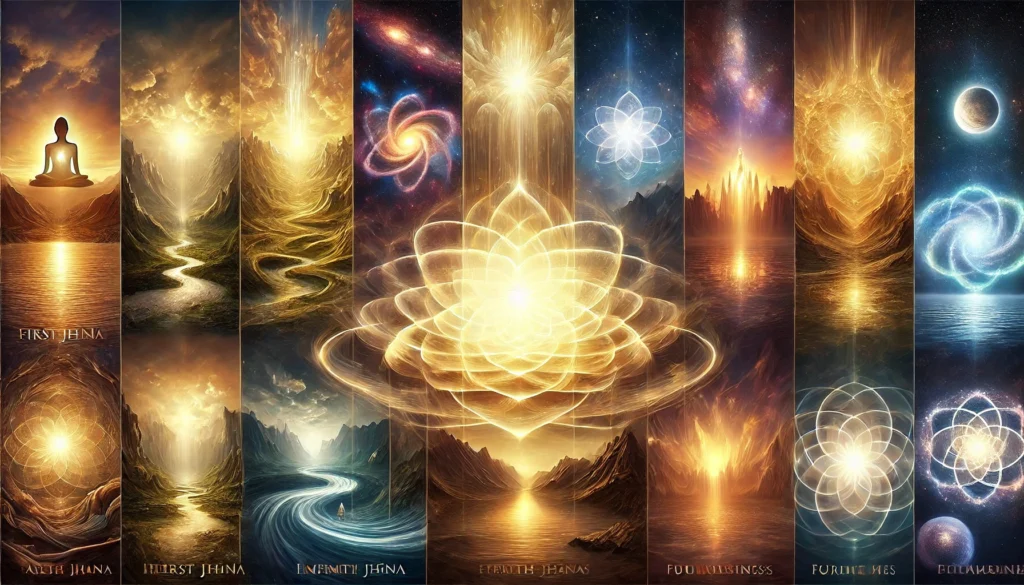
The Jhanas are 8 distinct meditative states, translated as:
- Bliss (I like the words Anticipation/Excitement)
- Joy
- Contentment
- Equanimity (I like the word Neutrality, for being more clear about what we are pointing to, Equanimity as a word gets used in a lot of ways)
- Boundless Space
- Boundless Consciousness (I also like the word Boundless fullness in contrast to boundless emptiness for 5th Jhana)
- Nothingness
- Neither perception nor non perception – (or also “not something and not nothing”)
These states are profoundly enjoyable and often serve as “refuges” along the challenging meditative (and life) path. With the right guidance and practice, most people can access them. You should assume this potential is available to you. Although there is a debate among meditators around “depth” and how deep a Jhana experience needs to be to be “real” or definitive.
How do I know if I’m doing Jhana?
A common difficultly in meditation is confirming whether what you’re experiencing aligns with what others describe. This is difficult in every day life too, but we tend not to worry about it. There is a debate among meditators around “depth” of Jhana and how deep a Jhana experience needs to be to be considered “real” or definitive. This is a particularly tricky debate because there are not very many “signs” along the meditative process that are certain and consistent between people, so when there are (near) universal commonalities we want to be really really certain that we are talking about the same thing when we talk.
Blurred states of experience
One interesting effect of states is that if we are sensitive, we can lightly feel the experience of each other’s state. Including Jhana. Through my own Jhana practice, I am familiar with how it feels to be in touch with the Jhanas. This means I can point out to people when they are in the right spot or nearby. I can also identify the mistakes they might be making which get in the way of their Jhana experiences for example:
- trying too hard
- not adding enough energy
- not believing it will work
- not feeling worthy of having nice things
These are all common forms of resistance.
I teach Jhāna meditation using tools I’ve developed through self-directed practice, study, and discussions with other meditators. I have published a free guide to explore the Jhanas yourself in this google doc.
Additionally, I offer a pointing-out process inspired by Daniel P. Brown’s Pointing Out the Great Way, which helps you recognize and enter these states more easily.
If you’d like a direct experience of Jhāna, you can book a session on my Contact page.